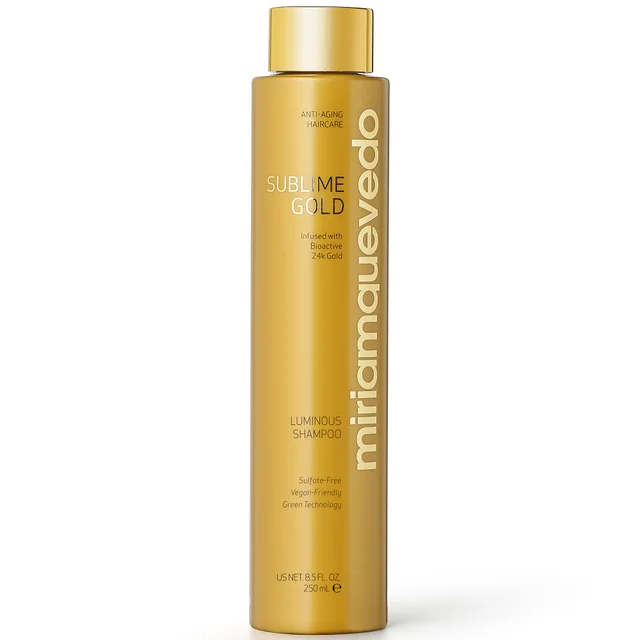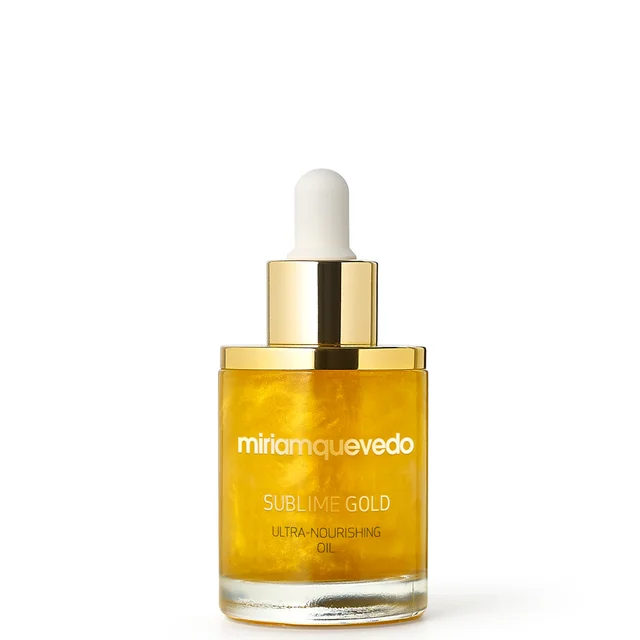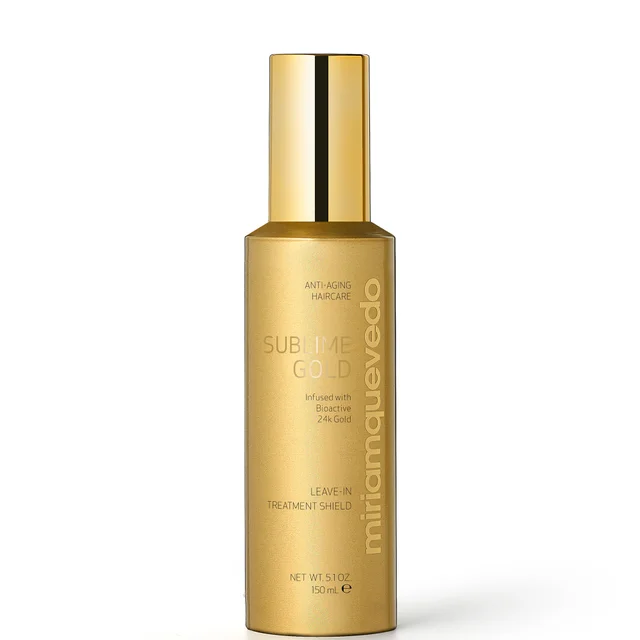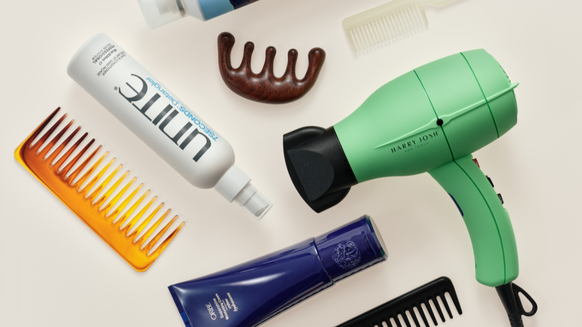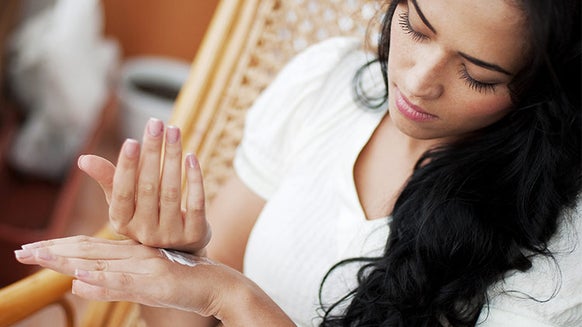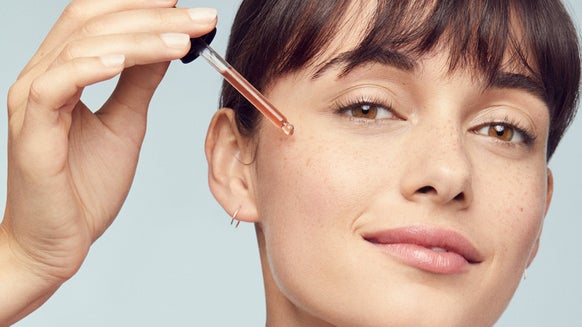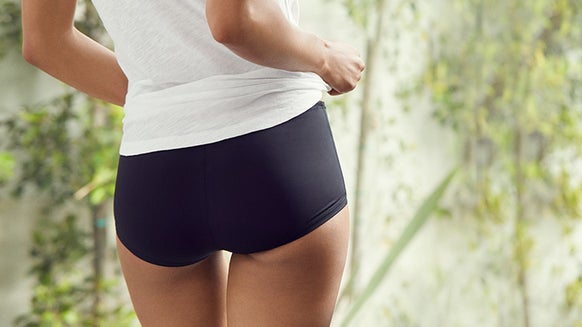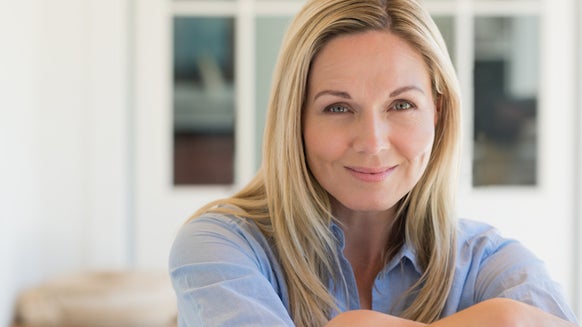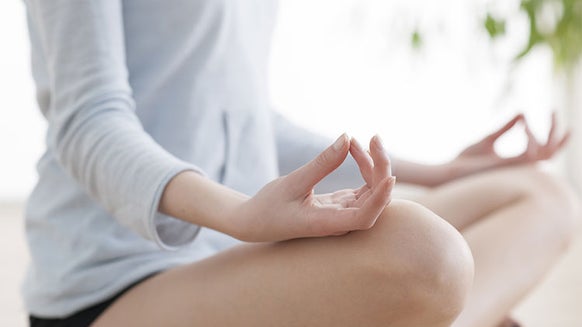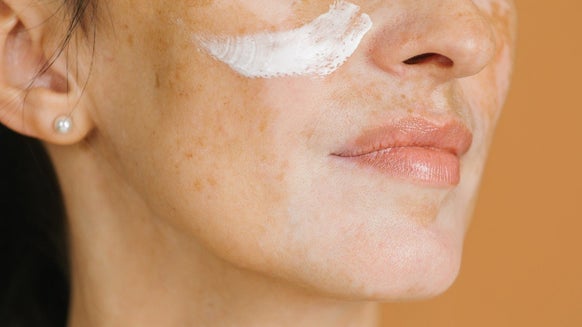How to Treat a Dry Scalp: 5 Tips From Hair Care Brand Founder Miriam Quevedo
When talking about skincare, most of us only tend to focus on our face. So when it comes to our scalp, it’s easy to overlook signs of dryness until they’re impossible to ignore. If you’ve noticed small flakes, constant itch, or a tight, uncomfortable feeling on your scalp, it might be more than just a shampooing mishap. Dry scalp is a common problem that affects how your scalp feels and how your hair looks. The good news? It’s possible to get your scalp back in balance. That is, if you know what’s causing the issue and how to approach it. Below, Miriam Quevedo, the eponymous creator of her luxe, Barcelona-based hair and skin care brand, shares her expert tips and advice on how to treat dry scalp and breathe new life into your crowning glory.
Meet the Expert
Miriam Quevedo - Founder and creator of hair and skin care brand miriam quevedo
What is Dry Scalp?
Much like how dry skin isn’t the same as a dehydrated one (although these terms are often used interchangeably), it’s important to distinguish between a dry and dehydrated scalp, says Quevedo. “A dry scalp typically results from a lack of natural oils and nutrients. It’s often associated with infrequent washing (once or twice a week), and the hair fiber may appear thick, coarse, and dull,” she explains.
A dehydrated scalp, on the other hand, is caused by a lack of water. “This can lead to tightness, discomfort, itching, and flaking. Dehydration also affects the hair fiber itself, as water is one of its essential components,” she adds..
Dry scalp can happen anytime and to anyone, but it tends to be more common during colder months, after changes in your hair care routine, or if your skin type leans naturally dry.
Is Dry Scalp and Dandruff the Same?
Flakes on your scalp can be confusing, especially since dry scalp and dandruff are often assumed to be the same thing. Unlike dandruff, which is usually related to excess oil or a scalp yeast imbalance, dry scalp is simply skin that’s lacking natural moisture, much like the dry patches you might notice on your face or body. And knowing the difference can help you treat the problem more effectively.
“Dandruff is caused by an overgrowth of a fungus called Malassezia furfur, which is naturally present in the scalp’s microbiota. When environmental imbalances occur, this fungus can proliferate, accelerating cell turnover and leading to characteristic symptoms such as itching, flaking, and sometimes associations with seborrhea or psoriasis,” explains Quevedo.
Dry scalp happens when your skin loses too much moisture and often comes with dry skin elsewhere on your body, especially if you’re prone to dryness overall. “In dry scalp, flaking tends to be small, white, and dry, whereas dandruff often involves persistent itching and can produce larger, greasier flakes,” adds Quevedo. This intense itching, she says, is a key sign to help differentiate between the two.
And yes, it’s possible to have both at the same time. A dry scalp can set the stage for dandruff to develop or worsen its symptoms, especially if you’re using products that strip away natural moisture. In response, your scalp overcompensates by producing more oil, which eventually leads to dandruff.
What Causes Dry Scalp?
Dry scalp rarely comes out of nowhere. While it may seem like your scalp just “decided” to act up, there’s almost always a reason behind the discomfort. Like the skin on your face, your scalp is just as sensitive to daily habits and environmental shifts, but it often gets far less care. Pinpointing the cause is the first step towards finding a fix, and more often than not, it’s something right in front of you. Here are the most common triggers of dry scalp:
Weather and Environment: Cold, dry air or cranked-up indoor heating can zap moisture from your skin, including your scalp. Washing and Shampoo Choices: Shampooing too often and using formulas loaded with strong cleansers strip away the natural oils your scalp needs to stay comfortable. Hot Water and Styling Tools: If you love long hot showers or rely on heat styling, you’re making it harder for your scalp to hold on to moisture. Allergic Reactions: Some people react to hair dyes, fragrance, or preservatives in hair care. This can show up as dryness, irritation, or both. Age and Hormones: As the years go by, your scalp naturally makes less oil. Shifts in hormones can make dryness more noticeable. Underlying Skin Conditions: Eczema, psoriasis, and fungal infections can show up as dry, flaky skin on the scalp. Lifestyle: Dehydration, not eating enough healthy fats, and chronic stress all have a way of showing up on your scalp.
Ingredients to Look For to Treat Dry Scalp
Getting a dry scalp under control starts with picking the right ingredients. If you’re looking for the best ingredients for how to treat dry scalp, look into the following:
Hydrators and Humectants: Look for hyaluronic acid, glycerin, panthenol, and aloe. These help bring moisture back into the skin. “In our formulas, we use a fractionated form of hyaluronic acid with varying molecular weights, designed to closely mimic the hyaluronic acid naturally found in the skin,” Quevedo says.
Barrier-Repairing Ingredients: Ceramides, colloidal oatmeal, vitamin E, and aloe vera can help lock in moisture, calm irritation, and soothe a compromised skin barrier. “To nourish the scalp and hair, look for barrier-repairing lipids and oils. We use microlipids that act on specific areas of the scalp, follicle, and hair fiber—such as wild olive tree stem cells, featured in our Sublime Gold Collection.”
How to Treat Dry Scalp At Home
Getting a handle on dry scalp doesn’t have to mean a complete overhaul of your hair care routine or a bathroom full of new products. With a few mindful changes and a little consistency, you can start to restore moisture and comfort to your scalp right at home. Here are Quevedo’s expert-approved tips you can follow:
1. Gently Exfoliate with Scalp-Safe Products
According to Quevedo, a scalp exfoliant helps remove toxins and dead skin cells, making it easier for your other products and treatments to penetrate and work more effectively. It also helps to remove buildup and stimulate hair and skin renewal. “As a general guideline, we recommend exfoliating the scalp once a week to maintain a healthy scalp environment.”.
miriam quevedo Extreme Caviar Exfoliating Scrub Scalp Mask
Think of this luxurious scrub as a facial-worthy exfoliant for your scalp. It lifts away dead skin, excess oil, and product residue while infusing hair and scalp with caviar-rich nutrients for a cleaner, more comfortable scalp and hair that feels softer and healthier.
Key Ingredients: Caviar, Panthenol, Peptides, Antioxidants, Amino Acids
Hair Type: All hair/scalp types
Hair and Scalp Benefits: Exfoliates and preps scalp for cleansing, removes residue and impurities, balances excess sebum, controls dandruff, revitalizes hair and scalp
Beauty Insider Tip: Use two to three times weekly by parting hair in sections and massaging the product in small circles. Then, rinse thoroughly before shampooing.
2. Switch to a Gentle, Hydrating Shampoo
“Choose a gentle, nourishing shampoo that respects the scalp’s natural balance and provides hydration or nutrition during cleansing,” recommends Quevedo. Reducing shampoo frequency (aim for two or three times a week) can also help your scalp retain its natural oils.
miriam quevedo Sublime Gold Luminous Shampoo
High-performing and research-backed ingredients make this formula feel more like a luxurious treatment for your hair than a shampoo. It nourishes deeply, repairs, and strengthens hair without weighing it down while cleansing gently, protecting color, and boosting hair’s natural shine.
Key Ingredients: Bioactive 24K Gold, Wild Olive Tree Stem Cells, Vitamin D Nectar, Vegan Shine Beautifier Complex, Five Trace Elements Protein Complex, DNA Protein Repair Complex, Organic Argan Oil, Vegan Keratin
Hair Type: All, including color-treated hair
Beauty Insider Tip: This pre-wash treatment is the first step in your hair care routine and should be applied to dry hair before shampooing.
Hair and Scalp Benefits: Minimizes signs of hair aging, protects color, repairs damage, boosts shine and softness
Beauty Insider Tip: For best results, leave on for two to five minutes before rinsing to allow active ingredients to fully absorb.
3. Pair with a Nourishing Conditioner
Double down on hydrating and revitalizing your scalp by following your shampoo with a nourishing conditioner to promote healthier hair growth, moisturize the scalp, and rebalance oil production.
miriam quevedo Sublime Gold Luminous Conditioner
A conditioner that also doubles as a rejuvenating treatment, this hydrating balm blends luxe ingredients with proprietary complexes and powerhouse botanicals to strengthen hair, restore elasticity, and boost shine without adding weight. It softens, detangles, and protects against environmental stress while targeting the most common signs of unhealthy hair.
Hair Type: All, especially dry, damaged, or aging hair
Hair and Scalp Benefits: Strengthens and repairs hair fiber; restores softness and shine; protects against damage from UV rays, pollution, and salon treatments; combats split ends, eroded cuticles, premature hair loss, lack of vitality, and overactive oil glands
4. Use a Targeted Scalp Mask
Once a week, treat your scalp to an intensive oil treatment. Look for scalp products with nourishing oils and botanicals designed to restore moisture and soothe irritation.
miriam quevedo Sublime Gold Mask
For hair and scalp that are craving for some intense pampering and transformation, this mask delivers. Infused with three types of bioactive 24K gold, it penetrates into the hair and scalp to hydrate and repair damage, fortify bonds, strengthen follicles, and restore your hair’s youthful luster while nourishing and revitalizing the scalp.
Key Ingredients: Bioactive, Micronized, and Flakes 24K Gold, Wild Olive Tree Stem Cells, Vitamin D Nectar, Vegan Shine Beautifier Complex
Hair Type: All, especially dry, dull, and damaged hair
Hair and Scalp Benefits: Repairs and protects hair and scalp from external stressors, shields against aging and external damage, replenishes scalp moisture and soothes irritation, enhances volume and shine, conditions strands and strengthens follicles
Beauty Insider Tip: For best results, use the product after a shower by applying to both hair and scalp. Wrap hair in a turban and leave for 15 to 20 minutes before rinsing.
5. Finish with a Leave-In Treatment Before Bed
“To treat a dry scalp, apply a leave-in night treatment rich in vitamins and nutrients to help restore the hydrolipidic barrier while the scalp is at rest,” Quevedo suggests.
miriam quevedo Sublime Gold Shield
Think of this youth-activating elixir as an all-day-and-night hair and scalp defense that nourishes and protects 24/7. It goes deep into the scalp to help strengthen follicles, protect against environmental damage, and support healthy hair growth while detangling, softening, and restoring shine without weighing down strands.
Hair and Scalp Benefits: Strengthens and regenerates scalp and follicles, protects from UV rays, pollution, and oxidative stress, restores hydration and soothes scalp irritation, repairs and protects hair fiber for lasting shine and softness
FAQs
What are the signs and symptoms of a dry scalp?
Not sure if your scalp is actually dry? Most people with dry scalp notice small, dry, and powdery white flakes dusting their shoulders or appearing when they scratch their head. The scalp itself tends to feel tight or even a little sore at times. Typically, there’s little to no oiliness at the roots, and many people also experience dryness in other areas of their body, like the face, arms, or legs. If the flakes you’re seeing are larger, greasy, or come with noticeable redness or soreness, it might point to something else, such as dandruff or another scalp condition that may need more specific care.
Can you use moisturizer for a dry scalp?
Yes, you can use moisturizer on your scalp, and it’s actually encouraged if your scalp feels dry or tight. Light, non-greasy moisturizers, leave-in conditioners, or even oils (like jojoba or coconut) can be applied directly to the scalp to help restore moisture. Just use a small amount and make sure to wash out any buildup during your next shampoo.
What Ingredients and Habits Should You Avoid?
What you leave out of your scalp care routine can be just as important as what you put in. Sulfates are best avoided, says Quevedo, because while they’re effective in ridding your hair and scalp of dirt and buildup, they do so in a way that also strips essential natural oils.
Products with high amounts of drying alcohols, such as sprays, gels, and foams, can also make dryness worse. Likewise, fragrances and dyes can be irritating, especially if your scalp is already sensitive.
And as much as we’re all fans of a relaxing shower and good hair days, hot water and frequent heat styling can actually deplete moisture, so stick to moderate temperatures in the shower and with your styling tools. Finally, watch out for product buildup as layering on too many products or not rinsing thoroughly can leave behind residue, adding to both dryness and irritation.
The Bottom Line
Dry scalp is frustrating, but with the right approach, it’s absolutely something you can manage. Stick with gentle, hydrating products, avoid harsh ingredients, and treat your scalp to regular moisture. Remember: progress takes time, and if you’re consistent and patient, your scalp will feel more comfortable and look healthier than ever before. Plus, you’ll spend less time worrying about flakes and itch. After all, a healthy scalp is the foundation for healthy hair—and it deserves the same amount of attention you give to the rest of your skin.

Janeca Racho is a Journalism graduate with over 15 years of writing experience. After getting her start in public relations and advertising, she made the switch to freelance writing and began working for various lifestyle, fashion, and travel brands. Her love for all things skincare has led her to beauty reporting and research for the last ten years. Writing for several hair and beauty blogs, she reports on anti-aging staples, trending brands and products, must-have ingredients, and health and wellness.

